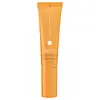What's inside
What's inside
 Key Ingredients
Key Ingredients

 Benefits
Benefits

 Concerns
Concerns

 Ingredients Side-by-side
Ingredients Side-by-side

Water
Skin ConditioningTranexamic Acid
AstringentMaltooligosyl Glucoside
Skin ConditioningGlycerin
HumectantAlpha-Arbutin
AntioxidantHydrolyzed Collagen
EmollientHydrogenated Starch Hydrolysate
HumectantSodium Hyaluronate
HumectantPhenoxyethanol
PreservativeAmmonium Acryloyldimethyltaurate/Vp Copolymer
Parfum
MaskingCaprylic/Capric Triglyceride
MaskingDeoxyphytantriyl Palmitamide Mea
Skin ConditioningHydrogenated Lecithin
EmulsifyingCeramide NP
Skin ConditioningCholesterol
EmollientWater, Tranexamic Acid, Maltooligosyl Glucoside, Glycerin, Alpha-Arbutin, Hydrolyzed Collagen, Hydrogenated Starch Hydrolysate, Sodium Hyaluronate, Phenoxyethanol, Ammonium Acryloyldimethyltaurate/Vp Copolymer, Parfum, Caprylic/Capric Triglyceride, Deoxyphytantriyl Palmitamide Mea, Hydrogenated Lecithin, Ceramide NP, Cholesterol
Ingredients Explained
These ingredients are found in both products.
Ingredients higher up in an ingredient list are typically present in a larger amount.
Alpha-Arbutin is made from hydroquinone and glucose. It may also be derived from the fermentation of soybeans.
This ingredient an antioxidant, meaning it helps protect your skin cells against damage.
Studies show this ingredient helps improve hyperpigmentation and fade discoloration.
Alpha-Arbutin may be used with other ingredients that help with hyperpigmentation. These ingredients include retinol, Vitamin C, niacinamide, and tranexamic acid.
Learn more about Alpha-ArbutinTranexamic Acid is best used for treating hyperpigmentation, discoloration, and melasma. It can also help build a stronger skin barrier.
Once applied, Tranexamic Acid starts decreasing inflammation from UV exposure. Tranexamic Acid also prevents our skin cells from meeting the pigment production cells.
Its brightening property makes it great at reducing the appearance of acne scars and marks.
Fun fact: Tranexamic Acid is also a medication used to reduce heavy bleeding.
This acid is derived from lysine, an amino acid.
Learn more about Tranexamic Acid